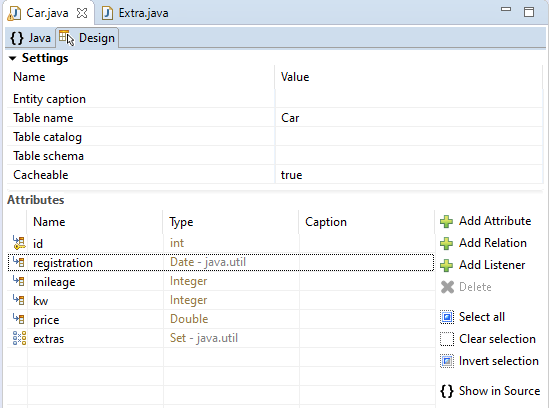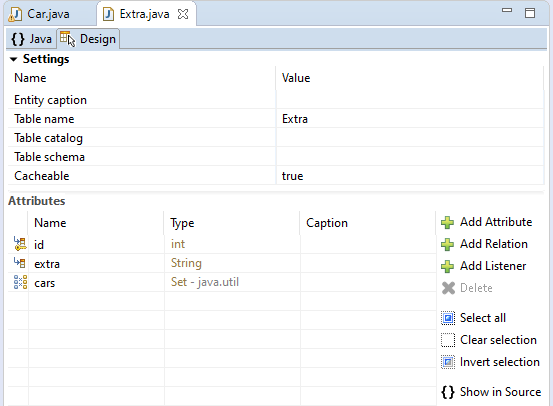n:m Relation (Many to Many)
-
Create a new entity Extra and add an attribute extra of type String.
-
Close the Extra tab and click Yes in the following dialog to save the Extra entity.
-
Create a new entity Car and add the following attributes:
-
registration of type date.
-
mileage of type Integer.
-
kw of type Integer.
-
price of the type *double
-
-
In the Project Manager at *main-java > domain click on Extra.java and drag it to the Attributes field in the entity editor.
-
In the following dialog, select the Many to Many (n:m) option.
-
Accept the setting Bidirectional and the suggested name carextra for the join table needed in the database for mapping the n:m relation.
-
Click OK.
-
Click Save.

Result:
-
Entity Car - The Car entity is extended by the extras attribute of the Set type.
@ManyToMany(fetch = FetchType.LAZY) @JoinTable(name = "carextra", joinColumns = @JoinColumn(name = "Car_id", referencedColumnName = "id", nullable = false, updatable = false), inverseJoinColumns = @JoinColumn(name = "Extra_id", referencedColumnName = "id", nullable = false, updatable = false)) public Set<Extra> getExtras() { return this.extras; } public void setExtras(final Set<Extra> extras) { this.extras = extras; }
-
Entity Extra - The entity Extra is extended by the attribute cars of type Set.
@ManyToMany(fetch = FetchType.LAZY) @JoinTable(name = "carextra", joinColumns = @JoinColumn(name = "Extra_id", referencedColumnName = "id", nullable = false, updatable = false), inverseJoinColumns = @JoinColumn(name = "Car_id", referencedColumnName = "id", nullable = false, updatable = false)) public Set<Car> getCars() { return cars; } public void setCars(Set<Car> cars) { this.cars = cars; }
|